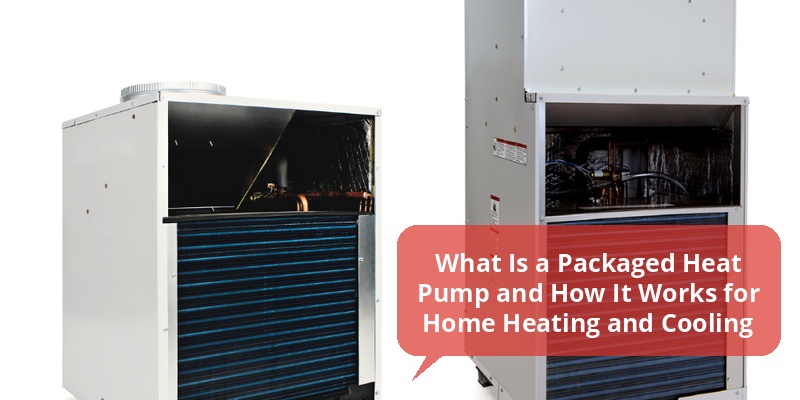Packaged heat pumps have become a popular choice for climate control in American homes and businesses due to their efficiency and versatility. These all-in-one units combine heating and cooling functions into one system, which can save space and simplify installation. Understanding what a packaged heat pump is and how it operates can help homeowners make informed decisions about their HVAC options.
| Feature | Description |
|---|---|
| Definition | All-in-one HVAC unit combining heat pump and air conditioning components |
| Common Installation | Typically installed outside or on rooftops |
| Functionality | Provides both heating and cooling using a single system |
| Energy Efficiency | Offers energy-saving benefits over separate HVAC systems |
| Maintenance | Centralized maintenance due to integrated components |
What Is a Packaged Heat Pump?
A packaged heat pump is a complete heating and cooling system housed in a single outdoor unit. Unlike split systems, where the condenser and evaporator are separate, packaged units contain all key components—compressor, condenser coil, evaporator coil, and blower—in one compact enclosure. This design makes it a convenient and space-saving solution for homes and commercial buildings.
Packaged heat pumps can be mounted on rooftops, beside buildings, or on a concrete pad near the structure. They simplify installation since they require fewer indoor components and less ductwork compared to traditional split systems.
How a Packaged Heat Pump Works
The core principle of a packaged heat pump is heat transfer rather than generation. The unit moves heat from outside air to inside during the heating season and reverses the process to remove heat from indoors during cooling.
Heating Mode
- The refrigerant absorbs heat from outdoor air, even in cool temperatures.
- The compressor increases the refrigerant temperature and pressure.
- Warm refrigerant passes through indoor coils, releasing heat to warm the indoor air.
Cooling Mode
- The unit extracts heat from indoor air as refrigerant evaporates in the indoor coils.
- The compressor circulates the refrigerant to the outdoor coil.
- Heat is expelled outdoors, cooling the indoor environment.
Modern packaged heat pumps often include an electric backup heater to provide additional warmth during extremely cold weather when the heat pump alone may struggle to extract sufficient heat.
Benefits of Using a Packaged Heat Pump
Choosing a packaged heat pump offers several advantages, especially for those seeking a combined heating and cooling solution tailored to limited space or ease of maintenance.
- Space Efficiency: All components consolidated in one outdoor unit free indoor space for other uses.
- Ease of Installation: Reduced complexity lowers installation costs and time owing to the fewer indoor parts.
- Energy Savings: Heat pumps are more energy-efficient compared to traditional heating systems like furnaces, leading to lower utility bills.
- Year-Round Comfort: Provides both heating and cooling from one system, avoiding the need for separate units.
- Lower Maintenance: Centralized components facilitate easier and less frequent maintenance.
Types of Packaged Heat Pumps
| Type | Description | Best Suited For |
|---|---|---|
| Air-Source Packaged Heat Pumps | Transfer heat between outdoor air and indoor air. | Moderate climates with temperatures above freezing. |
| Ground-Source Packaged Heat Pumps (Geothermal) | Use underground temperatures to heat and cool more efficiently. | Homes with sufficient land and higher upfront investment capacity. |
| Ductless Packaged Heat Pumps | Use mini-split systems without ductwork for localized zones. | Buildings without existing duct systems. |
Installing a Packaged Heat Pump
Installation considerations for a packaged heat pump include location, size, and integration with existing ductwork or ventilation.
- Placement: Outdoor units should have ample airflow space, protected from extreme weather and debris.
- Capacity: Proper sizing based on home or building square footage ensures optimal performance.
- Ductwork: Effective duct design or modification is essential for distributing heated or cooled air uniformly.
- Professional Assessment: Licensed HVAC technicians should perform site evaluations and installations to meet local codes and manufacturer requirements.
Energy Efficiency and Savings
Packaged heat pumps are widely recognized for their superior energy efficiency compared to conventional HVAC systems. Many models meet or exceed ENERGY STAR standards, offering lower energy consumption with comparable output.
Energy efficiency ratings to consider include:
- Seasonal Energy Efficiency Ratio (SEER) – measures cooling efficiency.
- Heating Seasonal Performance Factor (HSPF) – rates heating efficiency.
- Coefficient of Performance (COP) – the ratio of useful heating or cooling provided to energy consumed.
In regions with mild winters, packaged heat pumps can reduce heating costs significantly, especially compared to electric resistance heating or fuel-based furnaces.
Maintenance Tips for Packaged Heat Pumps
Routine maintenance extends the life and efficiency of packaged heat pumps. Key maintenance practices include:
- Regular filter replacement to ensure good airflow and air quality.
- Cleaning coils and fans to improve heat transfer and reduce strain on the compressor.
- Checking refrigerant levels to maintain optimal system operation.
- Inspecting electrical components for wear and proper connections.
- Scheduling annual professional tune-ups to catch issues early and maintain warranty coverage.
Common Issues and Troubleshooting
Packaged heat pumps can face operational challenges including:
- Reduced Heating in Cold Weather: Backup heating systems or defrost cycles may be necessary when outdoor temps drop very low.
- Unusual Noises: Can indicate loose components or failing motors.
- Poor Airflow: Blocked filters or duct leaks reduce performance.
- Electrical Failures: Fuses, contactors, or capacitors may degrade over time.
Prompt professional repairs ensure safety and performance remain optimal.
